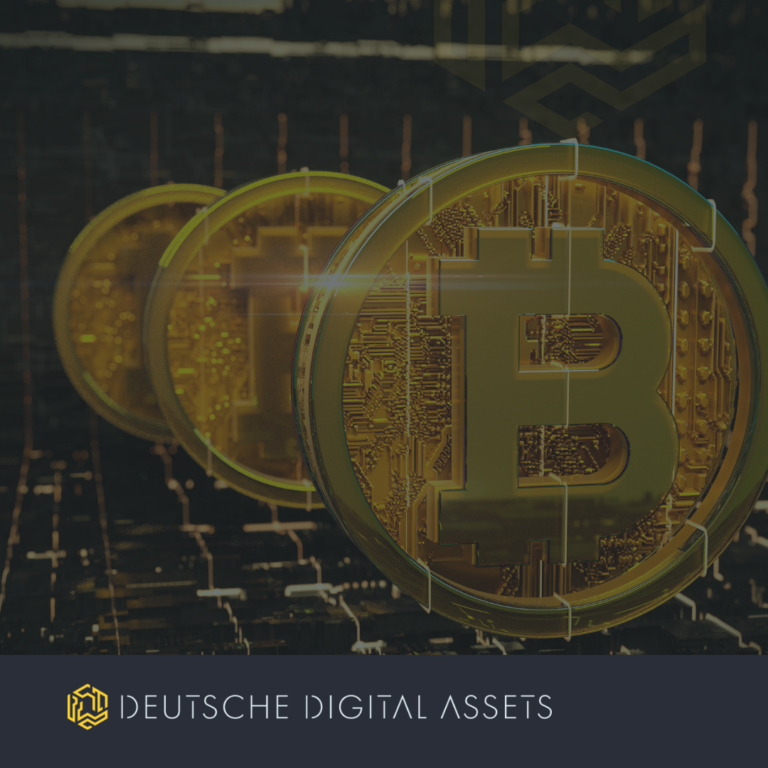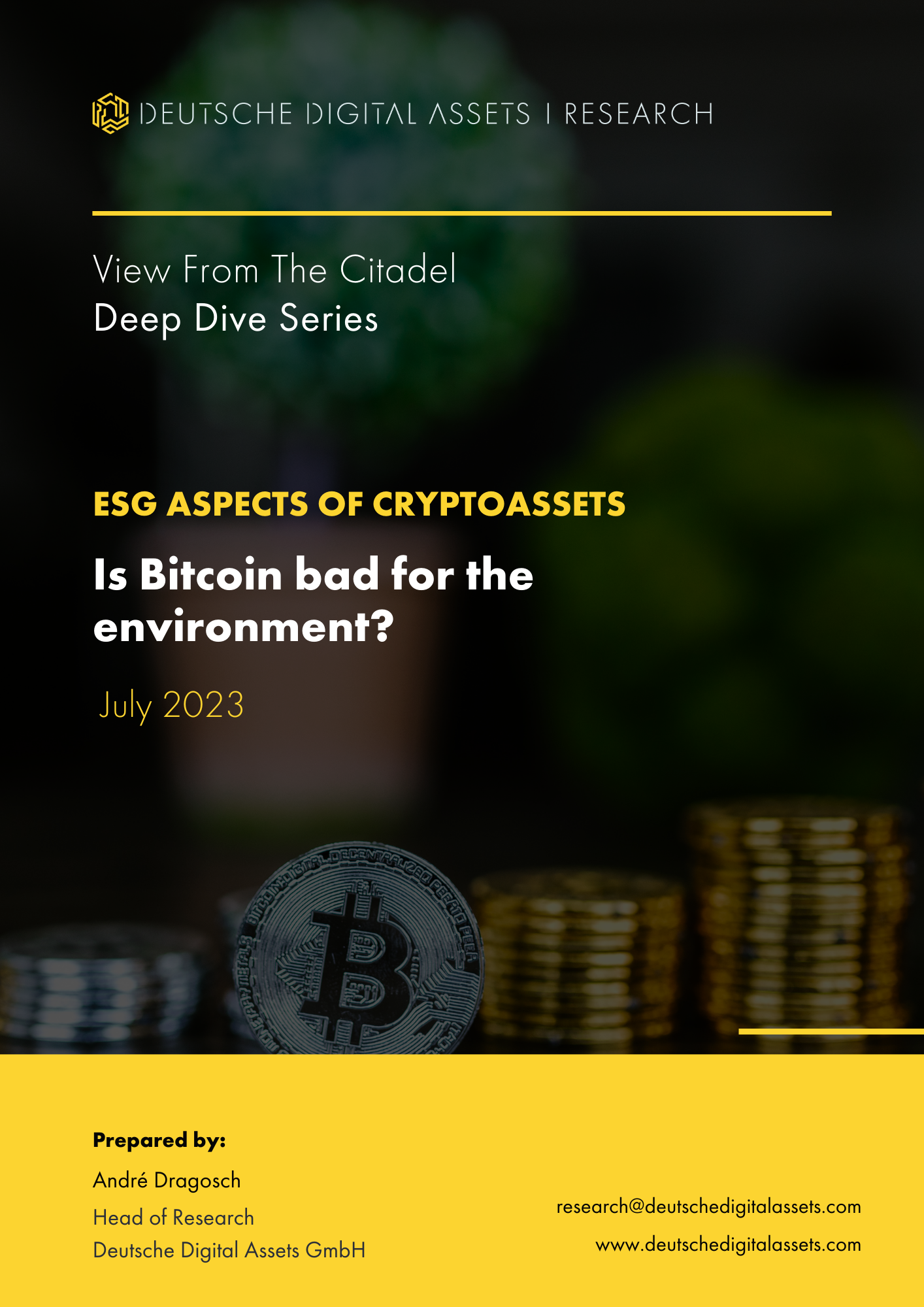Erfahren Sie mehr über digitale Zentralbankwährungen (CBDCs) und warum sie keine Bedrohung für Bitcoin sind.

Das Aufkommen und die zunehmende Beliebtheit von Bitcoin haben die Zentralbanken in aller Welt auf den Plan gerufen. Folglich haben sie den Prozess der Aufrüstung ihrer Infrastruktur beschleunigt, um ihre eigenen souveränen digitalen Währungen zu schaffen.
Experten haben herausgefunden, dass die meisten der erstaunlichen Eigenschaften von Bitcoin auf die zugrunde liegende Open-Source-Blockchain-Technologie zurückzuführen sind, die das Netzwerk antreibt. Daher suchen Zentralbanken auf der ganzen Welt aktiv nach Möglichkeiten, diese Technologie zu nutzen, um digitale Zentralbankwährungen (CBDCs) zu schaffen.Genau diese Tatsache hat bei einigen Krypto-Investoren Besorgnis ausgelöst, da sie befürchten, dass die Einführung von CBDCs die Menschen von der Verwendung von Bitcoin abhalten wird.
Auf den ersten Blick mag es tatsächlich so aussehen, als seien CBDCs ein echter Konkurrent, der Kryptowährungen wie Bitcoin ersetzen und den Kryptomarkt zu gegebener Zeit durcheinanderbringen wird. Doch bei näherer Betrachtung ist eine solche Schlussfolgerung nicht wirklich stichhaltig.
Lesen Sie weiter, um mehr über das Konzept der CBDCs, ihre Chancen und Nachteile zu erfahren und warum wir der Meinung sind, dass CBDCs keine Bedrohung für die am besten laufende Anlage des Jahrzehnts darstellen.
Was sind CBDCs?
CBDCs stellen die digitalisierte Version der Fiat-Währung eines Landes dar, die von der jeweiligen Zentralbank auf einem verteilten Ledger oder einer Blockchain-Technologie ausgegeben wird.
Traditionell wurde die Währung der meisten Länder in Form von Banknoten und Münzen ausgegeben, die als allgemein akzeptiertes Zahlungsmittel in einem Wirtschaftsraum fungieren. Durch die Verbesserung der Technologie hat sich die Verwendung von Geld jedoch in den digitalen Bereich verlagert.
Anstelle von physischem Geld sind elektronische, kreditbasierte Gelddienstleistungen entstanden, die von Banken und Zahlungsanbietern ermöglicht werden, wobei die Konten digital erfasst werden. Obwohl physisches Bargeld noch nicht ausgestorben ist, gehen immer mehr Länder dazu über, immer weniger Bargeld zu verwenden. Einige Länder wie China oder Schweden haben das physische Bargeld sogar schon fast abgeschafft.
Oberflächlich betrachtet sieht ein CBDC dem heutigen digitalen Kreditgeld furchtbar ähnlich. Die zugrunde liegenden Mechanismen funktionieren jedoch ganz anders. Anders als das heutige Kreditgeld stellen CBDCs die direkte Haftung von Zentralbanken und nicht von Geschäftsbanken dar. Als solche basieren sie auf einem anderen technologischen Rahmen.
Es gibt zwar keinen allgemeinen Rahmen für CBDCs, aber die meisten Forschungen und Experimente der Zentralbanken drehen sich um die Technologie, die 2009 mit Bitcoin eingeführt wurde.
In der heutigen Welt speichern Banken in der Regel Aufzeichnungen über Transaktionen und die Höhe des Geldbesitzes in einem zentralisierten Hauptbuch, während die Zentralbank die Geldpolitik diktiert. In einem CBDC-System hingegen sind mehrere Kopien derselben Finanzdaten über viele Finanzinstitute verteilt. Die Zentralbank verwaltet sie von oben.
Dieser Aufbau wird als Permission-Blockchain-Infrastruktur bezeichnet, bei der nur vorab autorisierte Teilnehmer das Hauptbuch ändern oder darauf zugreifen können. Dies steht im Gegensatz zu erlaubnisfreien Blockchains, die nicht von einer einzigen Behörde kontrolliert werden. Nichtsdestotrotz werden CBDCs als eine Möglichkeit angesehen, die Distributed-Ledger-Technologie zu übernehmen und gleichzeitig die Eigenschaften von Fiat-Währungen zu bewahren.
Warum werden CBDCs immer beliebter?
Da immer mehr Zentralbanken aktiv nach der Möglichkeit suchen, ein CBDC einzurichten, erfreuen sie sich zunehmender Beliebtheit. Einige Länder haben bereits ihre CBDCs eingeführt, die die Distributed-Ledger-Technologie nutzen. Wie diese ersten Beispiele zeigen, können derartige Implementierungen die Funktionsweise von Fiat-Geld möglicherweise verändern.
Mit Hilfe der Distributed-Ledger-Technologie können die Zentralverwahrer die Effizienz des Zahlungsverkehrs verbessern, die Transparenz der Finanzströme erhöhen und die Einhaltung der Vorschriften zur Bekämpfung der Geldwäsche und der Terrorismusfinanzierung (AML-CFT) erleichtern.
Darüber hinaus ermöglicht der dezentrale Charakter von DLT-Systemen den Zentralverwahrern, die Transaktionskosten und Abwicklungszeiten (insbesondere bei grenzüberschreitenden Zahlungen) zu senken, die Systemintegrität zu verbessern und die Hürden für die finanzielle Integration zu verringern.
Im Wesentlichen zielen CBDCs darauf ab, die Vorteile von Bitcoin in das regulierte fiat-basierte System zu bringen, das auf Zentralbanken basiert. Das klingt nach einer guten Nachricht für Menschen, die zwar die Vorteile von Bitcoin bewundern, aber aufgrund der hohen Volatilität und des unregulierten Charakters zögern, ihn zu nutzen.
Vor allem aufgrund der Auswirkungen der Covid-19-Pandemie und der aufkommenden Bedrohung durch Stablecoins sehen sich die Zentralbanken gezwungen, die Einführung von CBDCs zu beschleunigen.
Laut einer Umfrage 14% haben Pilotprojekte gestartet, und 86% erforschen aktiv das Potenzial von CBDCs, wobei 60% bereits mit dieser Technologie experimentieren.
Bis zum Februar 2022 haben neun Länder ihre CBDCs eingeführt: Die Bahamas, Antigua und Barbuda, St. Kitts und Nevis, Montserrat, Dominica, St. Lucia, St. Vincent und die Grenadinen, Grenada und Nigeria.
CBDCs: Chancen und Bedenken
Möglichkeiten
Reibungslose Zahlungen
CBDCs beseitigen die Risiken, die mit Bankausfällen und Plattformen Dritter verbunden sind. Mit CBDCs können sich die Verbraucher direkt an die Zentralbanken wenden, was sie von Kredit- und Liquiditätsrisiken befreit, denen Geschäftsbanken in Zeiten von Marktstress ausgesetzt sein können.
Kostengünstige grenzüberschreitende Zahlungen
Da die Zentralbanken die Zentralverwahrer direkt verwalten, können sie die Kosten für grenzüberschreitende Transaktionen senken, indem sie verschiedene Währungssysteme miteinander verbinden. Die Interoperabilität zwischen den CBDC-Systemen kann zur Verbesserung dieser Situation beitragen. CBDCs können die grenzüberschreitenden Kosten senken und die Geldabwicklung von Tagen auf Sekunden verkürzen.
Möglicher Einstieg in Bitcoin
CBDCs könnten auch dazu beitragen, die Nutzerbasis von Bitcoin zu erhöhen, da ihre Verwendung die Menschen dazu veranlassen wird, sich über DLTs und andere kryptobezogene Konzepte zu informieren. Außerdem werden Regierungen, die DLTs für ihre CBDCs verwenden, in den Augen der Öffentlichkeit die Blockchain-Technologie validieren und ihre Authentizität beweisen.
Dieser Schritt wird auch dem Bitcoin zugute kommen, da er die Mutter aller digitalen Währungen ist. Und wenn es den CBDCs irgendwann erlaubt wird, sich in Kryptobörsen zu integrieren, könnten sie sogar Stablecoins ersetzen und sich als wichtige Einstiegsmöglichkeit für Fiat-Währungen erweisen.
Betrifft
Extreme finanzielle Überwachung
Während der zentralisierte Charakter der CBDCs den Regierungen helfen kann, Erkenntnisse zur Bekämpfung der Terrorismusfinanzierung und der Geldwäsche zu gewinnen, gibt es auch Bedenken hinsichtlich des Datenschutzes. Die Regierung wird eine Möglichkeit haben, ihre Bürger effizienter auszuspionieren, insbesondere ihr Finanzleben. Dies ist ein Warnsignal.
Könnte in eine soziale Kreditbewertung einfließen
Ein CBDC kann die Privatsphäre der Nutzer bei der Verwendung von physischem Bargeld einschränken. Sobald die Privatsphäre verletzt wird, kann dies zu einer verstärkten Überwachung durch eine zentrale Behörde führen, was möglicherweise zur Einführung eines Social Credit Scores führt. In China zum Beispiel verfolgt die Regierung das Verhalten der Bürger durch ein "Social Credit System"-Programm. Das Programm belohnt und bestraft sie auf der Grundlage individueller Punktzahlen. Und da sich das chinesische DCEP bereits in der fortgeschrittenen Pilotphase befindet, könnte die Privatsphäre möglicherweise stärker unter Druck geraten.
Verweigerung des Zugangs zu Geld
Da die Regierungen und ihre Zentralbanken die CBDCs stark kontrollieren werden, kann den Menschen der Zugang zu Geld verwehrt werden, wenn die Regierung dies anordnet. Dazu muss lediglich die Wallet-Adresse einer Person auf eine schwarze Liste gesetzt werden.
Warum CBDCs keine Bedrohung für Bitcoin sind
Seit Bitcoin die Blockchain-Technologie eingeführt hat, sind viele Projekte als potenzielle Alternative zu Bitcoin entstanden. Beispiele sind alternative Münzen und Stablecoins.
Während viele von ihnen als Bitcoin-Killer bezeichnet wurden, haben sie alle die Nachfrage nach Bitcoin erhöht. Sie haben die allgemeine Marktakzeptanz verbessert und Innovationen innerhalb des weiteren Bitcoin-Ökosystems angestoßen.
Obwohl der Aufstieg von CBDCs eine Bedrohung für Bitcoin sein könnte, führt ein genauerer Blick auf ihre Funktionsweise zu dem Schluss: CBDCs sind keine echte Bedrohung.
CBDCs sind zentralisiert, Bitcoin ist dezentralisiert
Da die Zentralbank eines Landes CBDCs ausgibt, werden sie weiterhin zentral kontrolliert und verwaltet. Dies schafft Raum für eine zentrale Fehlerquelle. Infolgedessen haben die Bürger keine andere Wahl, als der Regierung zu vertrauen, dass sie richtig handelt. Im Gegensatz dazu ist Bitcoin dezentralisiert. Keine zentrale Behörde besitzt und verwaltet das Bitcoin-Netzwerk.
Gleichberechtigte Peers verwalten das gesamte Bitcoin-Netzwerk. Sie erzielen einen Konsens über den Zustand des Ledgers. Keine einzelne Partei kann das Ledger manipulieren oder eine andere Person am Zugriff auf das Netzwerk hindern. Das bedeutet, dass die Verwendung von Bitcoin, anders als bei CBDCs, nicht auf bestimmte Regionen beschränkt ist. Jeder kann auf das globale Bitcoin-Netzwerk zugreifen, wenn er nur eine Internetverbindung hat. Dadurch werden die Eintrittsbarrieren drastisch gesenkt.
Bitcoins haben ein begrenztes Angebot
Fiat-Währungen sind inflationär und haben ein unbegrenztes Angebot. Die CBDCs ändern nichts an dieser Tatsache. Die Regierungen können also so viele Einheiten prägen, wie sie für richtig halten. Genauso wie physische Banknoten nach Belieben gedruckt werden können.
Im Gegenteil, der Vorrat von Bitcoin ist auf 21 Millionen Münzen begrenzt. Das macht ihn zu einer guten Wahl für langfristige Investitionen. Infolgedessen übertraf Bitcoin in den letzten zehn Jahren jede andere Anlage.
Derzeit ist Bitcoin in erster Linie eine Anlage und keine Währung. Dies unterscheidet Bitcoin von CBDCs, die als Transaktionswährungen am besten geeignet sind.
CBDCs sind nicht privat
Obwohl die verteilte Natur der Blockchain die Transparenz und Rückverfolgbarkeit von Bitcoin erhöht, sorgen die eingesetzten kryptografischen Techniken dafür, dass die Identität der Nutzer pseudonym bleibt. Der Nutzer kann daher seine Privatsphäre bis zu einem gewissen Grad schützen. Viele Bitcoin-Nutzer, die in der Regel Wert auf ihre Privatsphäre legen, würden es nicht riskieren, das Bitcoin-Netzwerk zu verlassen. In CBDC-Netzwerken wird es wahrscheinlich zu einer Verletzung der Privatsphäre kommen.
Wie dieser kurze Vergleich zeigt: CBDCs bieten den Bitcoin-Nutzern keine wesentlichen zusätzlichen attraktiven Funktionen.
Das Gegenteil ist der Fall. Anstatt eine ernsthafte Konkurrenz darzustellen, werden CBDCs einen ergänzenden Zweck erfüllen, ähnlich wie Stablecoins. Wie das? Indem sie möglicherweise einige vorteilhafte Regelungen einführen, die das Krypto-Ökosystem weiter legitimieren.
Über DDA Ikonische Fonds
Iconic Asset Management ist die Brücke zu Krypto-Investitionen durch vertrauenswürdige Anlageinstrumente. Wir bieten Anlegern sowohl passive als auch Alpha-Strategien für Kryptowährungen sowie Risikokapitalmöglichkeiten.
Wir liefern hervorragende Leistungen durch vertraute, regulierte Vehikel, die den Anlegern die Qualitätsgarantien bieten, die sie von einem erstklassigen Vermögensverwalter erwarten, während wir unsere Mission verfolgen, die Verbreitung von Kryptoanlagen voranzutreiben.
Neueste Nachrichten
-
Warum die Volatilität von Bitcoin Sie nicht erschrecken sollte
- Wie genau ist das Bitcoin Stock-to-Flow-Modell?
- Bitcoin-Bildung ebnet den Weg für die Hyperbitcoinisierung
Iconic in der Presse
- Das Investment: Kryptowährungen kommen 2022 im Mainstream an
- Private Banking Magazin, Bitcoin - das perfekte Beispiel für ein ESG-Investment?
- Institutionelles Geld, Krypto-Manager steigt bei Family Office ein
- Morningstar, Iconic Funds erweitert seine Produktpalette mit einem physischen Ethereum-ETP
Aktuelle Forschungsberichte

Wie haben sich die Portfolios während der Pandemie entwickelt? ➡ Hier herunterladen
Analyse der wichtigsten Werttreiber der führenden Kryptowährungen ➡ Hier herunterladen
Wie effektiv sind gängige Anlagestrategien mit Bitcoin? ➡ Hier herunterladen
Untersuchung des Mythos der Nullkorrelation zwischen Kryptowährungen und Marktindizes ➡ Hier herunterladen
Weitere Informationen finden Sie unter deutschedastg
Haftungsausschluss
Die in diesem Artikel enthaltenen Materialien und Informationen dienen nur zu Informationszwecken.
Die Iconic Holding GmbH, ihre verbundenen Unternehmen und Tochtergesellschaften fordern nicht zu Handlungen auf der Grundlage dieses Materials auf. Dieser Artikel ist weder eine Anlageberatung noch eine Empfehlung oder Aufforderung zum Kauf von Wertpapieren.
Die Wertentwicklung ist unvorhersehbar. Die Wertentwicklung in der Vergangenheit ist daher kein Hinweis auf die zukünftige Wertentwicklung.
Sie erklären sich damit einverstanden, Ihre eigenen Nachforschungen anzustellen und Ihre Sorgfaltspflicht zu erfüllen, bevor Sie eine Anlageentscheidung in Bezug auf die hier besprochenen Wertpapiere oder Anlagemöglichkeiten treffen.
Unsere Artikel und Berichte enthalten zukunftsgerichtete Aussagen, Schätzungen, Projektionen und Meinungen. Diese können sich als wesentlich ungenau erweisen und unterliegen naturgemäß erheblichen Risiken und Unsicherheiten, die außerhalb der Kontrolle der Iconic Holding GmbH liegen.
Wir gehen davon aus, dass alle hierin enthaltenen Informationen korrekt und zuverlässig sind und aus öffentlichen Quellen stammen. Diese Informationen werden jedoch "wie besehen" ohne jegliche Garantie präsentiert.















